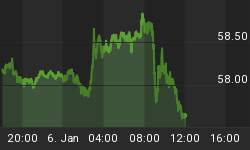***This is an excerpt from our February 28th 2010 Investment Analysis Report.***
As Federal Reserve Chairman Ben Bernanke recalls in this video (at 2:20); "I learned, basically, two lessons from my studies of the Depression." The first was "that monetary policy needs to be supportive, not contractionary." Interest rates are indeed low, but the Federal Reserve policies have failed to continue to expand the money supply. Notice the growth rates in the chart below. Apparently, the Fed's low rates and money printing are just not enough to get the banking system lending. We explained the Fed's powerlessness in this regard due to the collapse in the money multiplier last year. In layman's terms, money is cheap but unless it circulates, it becomes less plentiful.

The second lesson Ben Bernanke describes from his research, is "when the financial system breaks down, becomes highly unstable, then that has very severe adverse affects on the economy. Once again this was something, that was not handled, the Federal Reserve did not intervene to stop the failure of about a third of all the banks in the United States." In U.S. Bank of Mattress, we quoted Mr. Bernanke further; "Moreover, most of the failing banks were relatively small and not members of the Federal Reserve System, making their fate of less interest to the policymakers." Odd that as the FDIC's problem bank list continues to grow; Mr. Bernanke would focus his attention "to prevent the failures of any large systemically critical firms."
He continues: "Globally there were massive bank failures. I think perhaps the most critical, in May of 1931 the Creditanstalt, which was one of the largest banks in Europe, failed which generated a wave of financial crisis around the world. Up until early 1931 arguably the 1929 downturn was just an ordinary, severe but ordinary downturn, it was the financial crisis and the collapse of banks and other institutions in late 1930 and early 1931 that made the Great Depression 'Great'."
We mentioned the failure of the Creditanstalt last year. "Like turning the page of a script before the movie catches up to you"; Europe's 24 largest banks now need to raise roughly $980B over the next three years according to Citigroup. They will be in direct competition with European countries which also must raise $2Trillion this year alone. As we stated in November 2009, Greece is "probably the closest to default." However from the Bloomberg chart below, it is Spain and Ireland that are even more important to European bank balance sheets. With European governments 'crowding out' private sector needs for capital and/or defaulting (causing massive losses at European banks), the risk is that a large European bank failure will generate another wave of financial crisis around the world such as happened in late 1930 and early 1931.

Apparently, Mr. Bernanke fails to see the importance of his own second Great Depression lesson. When asked about the funding crisis in the European Union, he stated: "So we are keeping an eye on it but the Europeans, of course, it's most relevant to them. They're most exposed to those problems and they're very focused on trying to get them under control."
Our Observation
Instead of the excuses Ben Bernanke offers for the Federal Reserve during the Great Depression: "the Federal Reserve didn't understand what was going on" or "they were pursuing very orthodox policies constrained by the gold standard", investors should know that the market can render the central bank powerless. For instance, since 1999 Japan's central bank has been purchasing financial assets with printed money to attempt to pump up their economy. But for ten years this quantitative easing policy has failed to lift Japan's economy off the mat. Instead central banks' power is derived from theatrics and sophistry.
***To see how far we think the market will correct, visit the rest of the report here: http://ltadvisors.net/2010Report/FinancialSystemBreaksDown.htm ***
At Lamont Trading Advisors, we provide wealth preservation strategies for our clients. For more information, feel free to contact us. Our monthly Investment Analysis Report requires a subscription fee of $40 a month. Current subscribers are allowed to freely distribute this report with proper attribution.
***No graph, chart, formula or other device offered can in and of itself be used to make trading decisions. This newsletter should not be construed as personal investment advice. It is for informational purposes only.
















